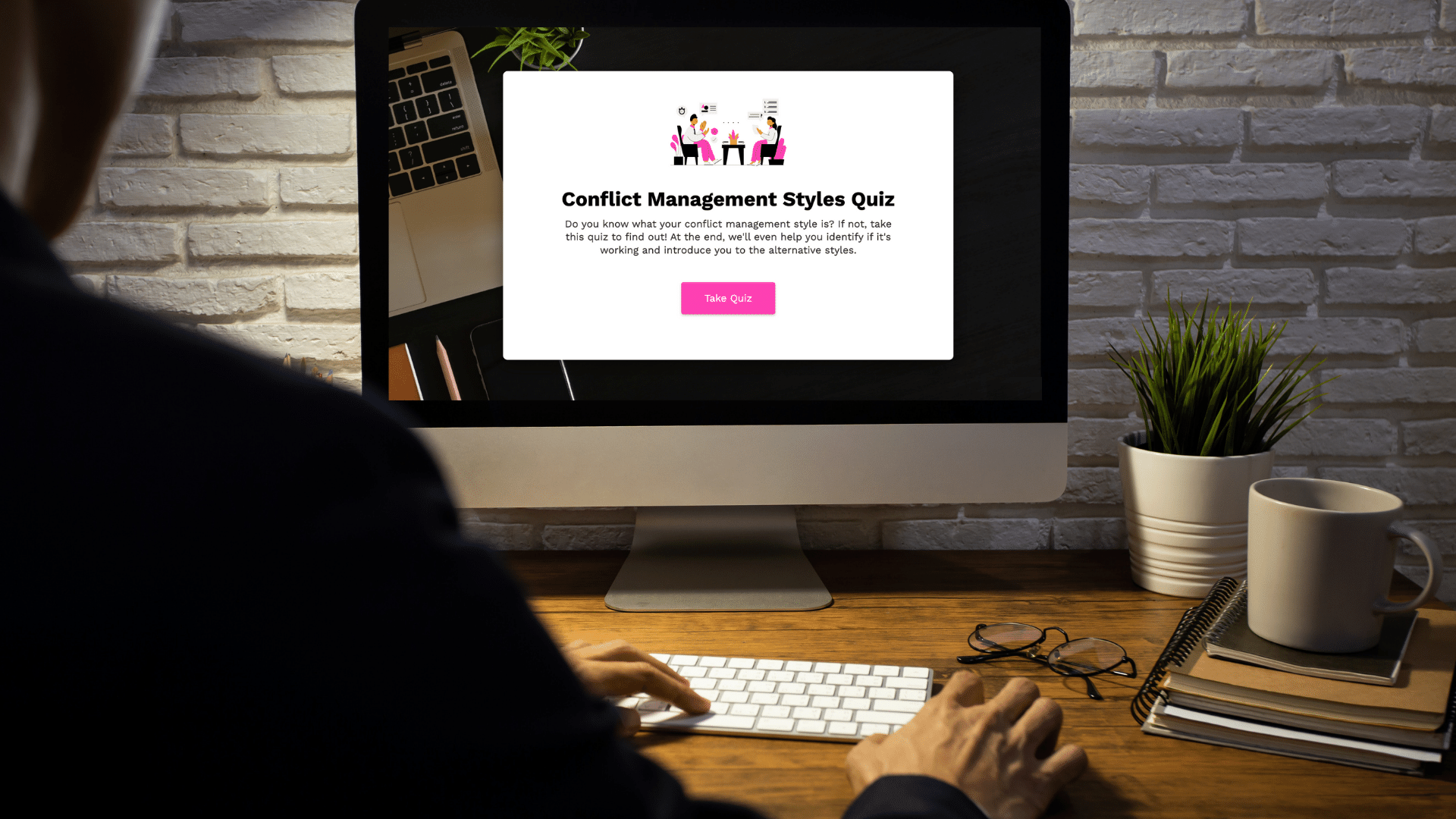Where there are people, there's conflict.
According to the CPP Global Human Capital Report, 85% of employees experience some form of conflict, with U.S. employees spending approximately 2.8 hours per week dealing with conflict.
For team leaders, these moments of tension aren't just inevitable headaches—they're golden opportunities hiding in plain sight. When handled skillfully, conflicts transform from productivity killers into catalysts for innovation and deeper team bonds.
But mastering this alchemy? That's where many team leaders struggle to find their footing.
Understanding Workplace Conflict: Definition and Sources
Workplace conflict isn't just colleagues squabbling over the thermostat setting (though that's certainly part of it!).
Workplace conflict is any tension or disagreement between employees or teams that comes from differing goals, values, communication styles, resources, or personalities within the work environment.
It encompasses any friction or disagreement that emerges between people or groups in a professional context. Getting a handle on what drives these tensions is your first step toward becoming the conflict whisperer your team needs.
What causes workplace conflicts?
Most workplace conflicts bubble up from these common wellsprings:
- Communication breakdowns and misunderstandings
- Competing priorities and limited resources
- Different working styles and approaches
- Role ambiguity and unclear expectations
- Personal values and beliefs that clash
The impact of unresolved conflicts on team productivity
When left to fester, conflicts in the workplace can wreak havoc:
Recognizing conflict as an opportunity for growth
Smart leaders don't run from conflict—they run toward it, recognizing it as fertile ground for:
- Uncovering underlying issues that might otherwise remain hidden
- Generating creative solutions through diverse perspectives
- Strengthening relationships through successful resolution
- Improving processes and systems that may be contributing to tension
8 Conflict resolution techniques
1. Avoiding: When to step back from conflict
Avoiding conflict style isn't just sticking your head in the sand—sometimes it's strategic withdrawal. This approach makes sense when:
- The issue is truly trivial compared to fires you actually need to put out
- Emotions are running so hot that productive conversation is impossible
- You need more facts before diving in
2. Accommodating: Yielding to maintain relationships
The accommodating conflict style puts relationships first, goals second. It's particularly effective when:
- The issue matters way more to the other person than it does to you
- Team harmony trumps winning this particular battle
- You've realized your position isn't actually the strongest
3. Competing: Taking a firm stance when necessary
The competing conflict approach is assertive and uncompromising. Use it sparingly, but don't hesitate when:
- Quick, decisive action is vital (like during a crisis)
- You need to implement necessary but unpopular decisions
- You're dealing with someone who sees accommodation as weakness
4. Collaborating: Finding win-win solutions
Collaborating conflict style means rolling up your sleeves together to find that elusive solution that makes everyone happy. Worth the effort when:
- Both sides have concerns too important to compromise
- You genuinely need to learn from others' perspectives
- Bringing diverse viewpoints together could crack a tough problem
Yes, it takes time—but collaboration often builds the strongest bridges while finding the most durable solutions.
5. Compromising: Meeting halfway for quick resolution
Compromising conflict style involves finding that middle ground where everyone gets something—and gives something up. Perfect for when:
- The goals matter but aren't worth an all-out collaborative effort
- Two equally powerful parties are deadlocked on opposing goals
- You need a temporary fix for a complex issue
Those 5 techniques are the first of the five TKI modes: The Thomas-Kilmann Conflict Mode Instrument (TKI) presented five distinct conflict handling modes to deploy depending on what the situation calls for.
6. Active Listening: The Foundation of Conflict Resolution
If conflict resolution were a house, active listening would be its foundation. This isn't just hearing words—it's fully absorbing what's being communicated, both verbally and non-verbally. Without this skill, you're essentially trying to solve a puzzle while missing half the pieces.
Effective listening techniques during conflicts:
- Maintain eye contact and open body language
- Eliminate distractions (put those phones away!)
- Take notes on key points when appropriate
- Resist the urge to interrupt or mentally rehearse your rebuttal
- Summarize what you've heard to confirm understanding
How to validate concerns without agreeing with them?
Validation doesn't mean agreement—it means acknowledging someone's feelings as legitimate. Try these approaches:
- "I can see why you might feel that way, given your experience."
- "That's a perspective I hadn't considered before."
- "I understand this is important to you, and I want to make sure I fully grasp your concerns."
Understand deeper issues by using clarifying questions
Often, the conflict people voice isn't actually what's eating at them. Dig deeper with effective communication through questions like:
- "Can you help me understand what's most important to you in this situation?"
- "What would an ideal resolution look like from your perspective?"
- "When did you first notice this becoming an issue?"
7. Emotional Intelligence
Emotional intelligence isn't just a buzzword—it's your secret weapon in conflict situations. The ability to recognize and manage emotions (yours and others') can be the difference between resolution and escalation.
Recognizing and managing your own emotional responses
Self-awareness during heated moments helps you:
- Spot your personal triggers before they hijack your rational brain
- Know when to call a time-out before saying something regrettable
- Separate your emotional reactions from the actual issues at hand
- Show your team what emotional regulation looks like in practice
Reading and responding to others' emotions appropriately
Social awareness lets you:
- Pick up on subtle body language that screams discomfort
- Shift your communication style based on others' emotional states
- Acknowledge emotions without letting them dominate the conversation
Creating psychological safety during difficult conversations
Psychological safety means creating a workplace environment where people can speak their truth without fear of backlash. To foster this:
- Frame conflict as a puzzle you're solving together, not a battle
- Acknowledge the discomfort in the room—"These conversations are never easy"
- Set ground rules that protect everyone's dignity
- Thank people for having the courage to engage
8. Mediating
Sometimes you'll need to step in as a neutral facilitator when team members can't resolve issues on their own.
When and how to step in as a neutral third party
Consider mediation when:
- Direct communication between parties has completely broken down
- Power imbalances make fair resolution unlikely
- Emotions are running too hot for productive conversation
When mediating:
- Clarify that you're there to facilitate, not judge
- Establish clear ground rules for the discussion
- Ensure both sides get equal airtime
Techniques for facilitating productive dialogue
Skilled mediators have specific tools in their toolkit:
- Reframing accusations as neutral observations
- Redirecting personal attacks toward issue-focused discussion
- Summarizing areas of agreement and disagreement
- Using strategic silence to encourage reflection
Guiding teams toward self-resolution
Your ultimate goal should be teams that can handle conflicts without you:
- Use mediation as a teaching opportunity for communication skills
- Point out effective moments during the conversation
- Gradually step back as parties show they can navigate conflicts constructively
Conflict resolution best-practices and supporting frameworks
5 C's of conflict resolution
Think of the 5 C's as your roadmap for navigating conflict resolution systematically:
1. Communication: Encouraging open dialogue
For having an open communication you need to deliberately create spaces for it:
- Schedule regular check-in meetings specifically designed to surface tensions
- Offer multiple feedback channels (including anonymous options)
- Show vulnerability by owning your part in problems
2. Compromise: Finding middle ground
While not the answer to everything, compromise often helps teams get unstuck:
- Help each side distinguish between their "must-haves" and "nice-to-haves"
- Look for creative alternatives that address core concerns
- Be willing to give ground on less critical issues
3. Collaboration: Working together on solutions
A collaborative approach transforms adversaries into problem-solving partners:
- Reframe the issue as "our challenge" rather than "your problem vs. my problem"
- Generate ideas freely before evaluating any of them
- Build on each other's suggestions rather than defending positions
4. Commitment: Following through on agreements
Without follow-through, even the best resolution falls apart:
- Document exactly what was agreed to
- Assign specific actions with owners and deadlines
- Schedule check-ins to ensure progress
5. Consideration: Respecting different perspectives
Mutual understanding requires genuine respect for how others see things:
- Acknowledge that different viewpoints can all contain truth
- Consider how cultural backgrounds and personal experiences shape perceptions
- Treat diverse thinking as your team's superpower, not its burden
5 R's of conflict resolution
The 5 R's give you a step-by-step process for addressing conflict:
1. Recognize the conflict exists
You can't fix what you won't acknowledge:
- Watch for warning signs like communication breakdowns or rising errors
- Don't dismiss "minor" issues that could snowball
- Create safe spaces for team members to voice concerns
2. Respond by addressing it directly
Timing is everything:
- Address conflicts promptly—but not in the heat of the moment
- Choose appropriate settings
- Start with just the essential participants
3. Reflect on contributing factors
Treating symptoms without addressing causes is a temporary fix at best:
- Look for systemic issues creating friction
- Determine whether the conflict stems from tasks or relationships
- Identify patterns that might signal deeper organizational problems
4. Resolve through collaborative problem-solving
Everyone affected needs a voice in the solution:
- Focus on underlying interests rather than stated positions
- Brainstorm multiple options before settling on one
- Test potential solutions against objective criteria
5. Rebuild relationships after resolution
Conflict often leaves relationship damage that needs repair:
- Acknowledge the emotional toll the conflict took
- Create positive interactions to rebuild trust
- Publicly recognize improvements and progress
Additional conflict resolution strategies for leaders
Leadership conflict management goes beyond putting out individual fires—it's about creating a team culture that handles disagreement constructively.
Set clear expectations to prevent conflict
The best conflict prevention starts with clarity:
- Establish team norms for behavior and communication
- Define who's responsible for what and who makes which decisions
- Create pathways for raising concerns before they become full-blown conflicts
Create and implement conflict management protocols
Formalized approaches ensure consistency:
- Develop clear steps for addressing different conflict types
- Define when and how to escalate unresolved issues
- Establish guidelines for involving HR or outside help
Lead by example through your conflict management approach
Lead by example to turn conflict into progress. In tense moments, show your team you mean it by:
- Show willingness to address issues head-on
- Create feedback culture within the team
- Own your mistakes and role in conflicts
- Practice the techniques you preach

 Gavin Brown
:
Jun 20, 2025 6:15:28 AM
Gavin Brown
:
Jun 20, 2025 6:15:28 AM



%20(1).png)